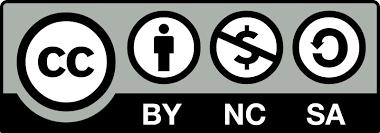Text in the Latest Theories of Textual Linguistics, Stylistics and Poetics
Bożena Witosz
Abstract
In this paper the author tries to present various concepts oftext in the latest theories of textual linguistics, stylistics and poetics. In the first part of the study the author indicates basic aspects of a statement (text) worked out on the basis oflinguistic research: comprehensive character ofthe statement; arrangement (in structural, semantic and pragmatic plane); coherence (hiérarchisation of structure); location of the statement in a pragmatic, cultural and historical context. In the next part the author pays attention to distinct approximation of competence and methodology scopes ofthe modem stylistics to the text theory. She enumerates those re[1]search fields for which text theory is a source of inspiration in stylistic analysis which are more completely analysed by stylistics (because of its interdisciplinary character) than by linguistics. Showing text concepts presented by poststructural trends in modem poetry the author draws forth those aspects which in comparison to a linguistic pattern create opposition: structure -texture; relationships of coherence (intratextual) -intertextual relationships; the subject as the central point-lack ofa merging institution; consciousness ofthe act of reading (interpretation of a text) - reading of incorrect interpretations (misreading), reading of a text; text formation as an act of a conscious choice (creation) - writing as quoting (reproduction). In conclusion the author states that the methodological syncretism oftoday will un[1]doubtedly contribute to an elaboration of a comprehensive interdisciplinary theory of text in the future.
Authors
Bożena WitoszStatistics
Downloads
License

1. Copyrights to published works are held by the University of Opole (to the collective work) and the Authors (to individual parts of the collective work that have an independent meaning).
2. Only previously undistributed works can be published in the scientific journal "Stylistics".
3. The University of Opole does not restrict the possibility of the author's further dissemination of his work on condition that the scientific journal "Stylistics" is indicated as the original place of publication and the consent of the University Publishing House.
4. Consent to the publication of the work in the scientific journal "Stylistics" is tantamount to granting the author a non-exclusive license to the University of Opole, including the right to use the work without territorial restrictions and time limits in the following fields of exploitation:
a) within the scope of recording and multiplication of the work - production of any number of copies of the work in whole or in part using a specified technique, including printing, reprography, magnetic recording and digital technique, introduction of the work into computer memory and computer networks,
b) within the scope of circulation of the original or copies on which the work has been recorded - circulation, lending or hiring of the original or copies,
c) within the scope of dissemination of the work in a manner other than specified in item 2 - making the work or its abstract available on the Internet by enabling the recipients to access the work on-line or enabling them to download the work to their own device that makes it possible to read it, placing the work in electronic databases that disseminate scientific works, including in particular the CEEOL database (Central and Eastern Online Libray) and the abstract in English in the CEJSH database (The Central Europaen Journal of Social Scienes and Humanites).
d) within the scope of creating and distributing dependent works created using the work - using them in the fields of exploitation specified in points 1-3.
5. The author is not entitled to compensation for granting the license to the work.
6. The author agrees that the University may grant further permission to use the work (sublicense) in the fields of exploitation specified in par. 2 paragraph 4.
7. The author agrees that, in connection with the distribution of the work, his or her personal information, that is, name, affiliation, and e-mail address, may be made public.
Most read articles by the same author(s)
- Romualda Piętkowa, Bożena Witosz, Leksykon szkolny. Gatunki paraliterackie, publicystyczne i użytkowe, red. M. Pytasz, Gorzów Wielkopolski : Silva Rerum, 1993, 237 s. , Stylistyka: Vol. 3 (1994): Comparative Stylistics
- Bożena Witosz, Profesor Aleksander Wilkoń (1935–2022) , Stylistyka: Vol. 31 (2022): Styl i media - Style and media




